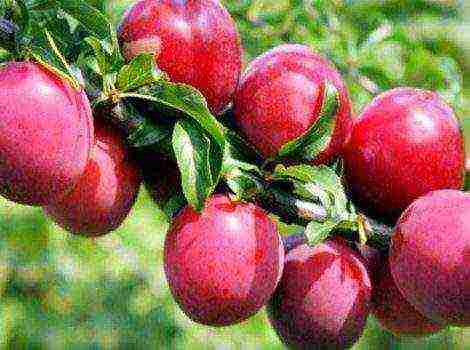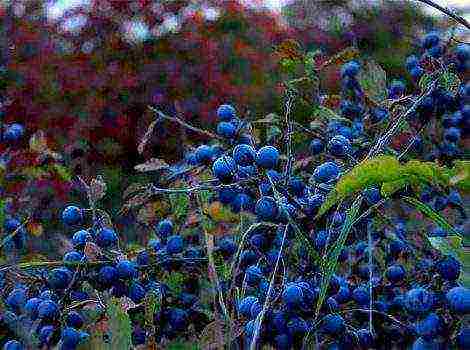Why does not the pear blossom and bear fruit, and what to do?
Why doesn't the pear blossom and bear fruit? There are various reasons why a pear does not bear fruit. Let's consider them in order.
In botany, pear defined as class dicotyledonous, department flowering, family pink, genus pear (lat. Pyrus). The height of the trunk is up to 20-25 m, the diameter of the crown is up to 5 m.There are about five thousand varieties of pears... Individual trees can live up to two hundred years. The average yield of harvesting fruits is about five tons per hectare, the maximum harvest from one tree is up to one ton.There are 33 types of pears... According to the safety and time of harvesting, types of pears are divided into summer, autumn and winter.
The main reasons why it does not bloom and bear fruit
Pear is a rather unpretentious plant and does not require any special conditions for its growth.
But, of course, good soil, adequate lighting and loosening of the soil have a beneficial effect on it. So unfavorable conditions can affect its flowering and fruiting.
It is known that almost all varieties of pears are self-fertile. I.e for pears, cross-pollination is required, since their own pollen does not form an ovary. Therefore, it is necessary that there are several varieties of pears in the garden.
It is important to take into account that the timing of their ripening coincides. The same problem can be solved by grafting a branch of another variety on a pear of one variety.
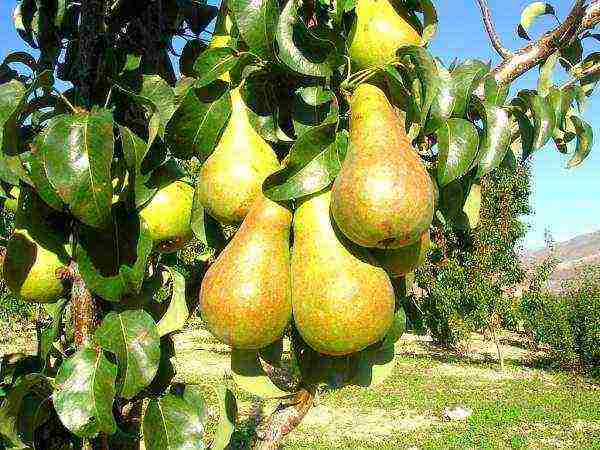
Frost is the second reason, affecting the flowering and fruiting of pears. In this case, it is necessary to provide for the effect of cold on various parts of the plant:
- in early spring, flowers, buds and ovaries do not tolerate frost, therefore, when choosing seedlings, it is not advisable to purchase southern varieties (unless, of course, you live in the middle or northern lane). Heat-loving varieties in these conditions require additional care for their protection, for example, with plastic films;
- at the beginning of winter, there is still little snow as a natural insulation. And the temperature has already dropped enough to freeze the roots of the plant and destroy or weaken it. In these cases, you need to take care of the insulation of the roots, covering them around the perimeter with some kind of insulation (leaves, branches, needles);
- also from frost in winter the bark of a tree can burst. In this case, covering up the damage with clay, garden pitch, followed by wrapping with a cloth will help;
- the cold north wind is also unfavorable for the pear. Therefore, when planting, you should take this into account and find a sufficiently protected place for the seedling (for example, a fence, wall, etc.).
It should be borne in mind that and insufficient illumination can also adversely affect pear yields. Therefore, while protecting the tree from the wind, you need to take care of its sufficient illumination.
Otherwise, if the neck is high above the ground, then the tree should be earthed. And if, on the contrary, it is low, then the excess land must be scooped up and discarded.
Pear doesn't like transplant... This is especially true for large seedlings. This should be avoided whenever possible. And if, nevertheless, this does not work out, then you need to additionally take care of the young seedling, watering it enough.
But sometimes, even under favorable conditions, the pear may not bear fruit.The reason for this may be simple - julienne.
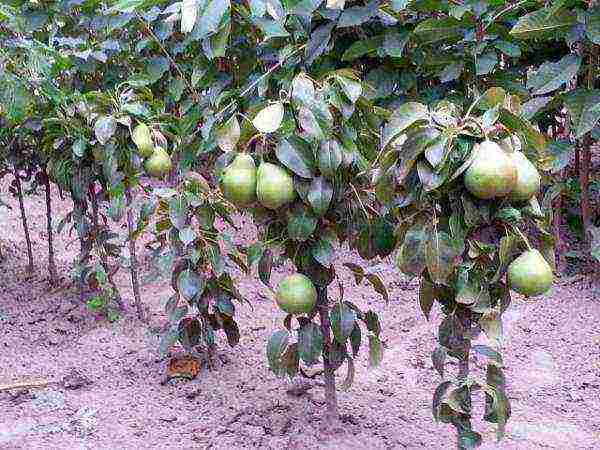
There are varieties of pears that bloom for the first time and begin to bear fruit only in the 10th or even 15th year of life. There is nothing you can do about it, except to vaccinate him of another variety.
Another misfortune for pears is pests, for example, copperhead. Even in early spring, it is capable of damaging the buds, even without allowing them to bloom.
The pear also has other enemies, for example, apple blossom beetle, moth. In addition, these pests are able to bring fungi with them onto the tree, which subsequently form a dark bloom on the leaves.
Therefore, pear trees should be sprayed with appropriate preparations, both before flowering and during it (for example, chlorophos or karbofos).
You may be interested in the following articles:
- How to properly plant and transplant a pear in the fall.
- Full description of the pear variety Talgar beauty.
- Planting and caring for columnar pears.
Nutrient Depleted Soil, can also cause a lack of fruiting. Lack of nitrogen can make up for manure. It is also advisable to purchase and enrich the soil with phosphorus-potassium fertilizers.
As with protecting the tree from the wind, you also need to not overdo it. If the soil is oversaturated with manure and fertilizers, this can lead not to the growth of fruits, but to an increased growth of branches and leaves.
Such an increase creates a strong thickening of the crown of the pear. This unproductive waste of the strength of the tree adversely affects the harvest. The fruits from this become smaller and their number decreases. therefore the crown of the tree requires regular pruning.
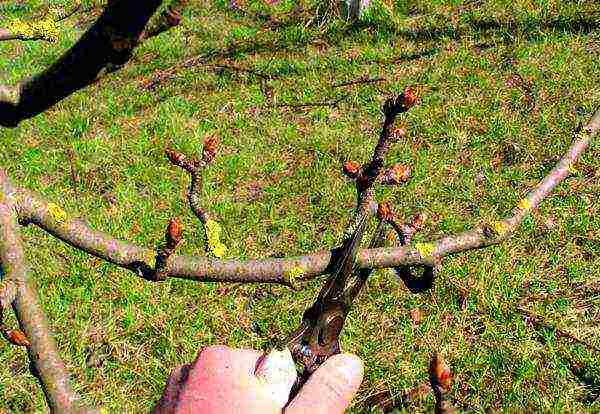
In this case, it should be predominantly remove young shoots growing inside the crown... And branches growing up at a large angle should be bent down and fixed horizontally.
But here, too, a reasonable and commensurate approach is needed. Pruning too hard can deplete a weak tree even more. Therefore, while the seedlings have not yet begun to bear fruit, pruning should be tried to be kept to a minimum.
Pear does not like high acidity of the soil, as well as waterlogging it. Therefore, when watering, you need to take this into account.
This can also lead to too high groundwaterat which the roots of the tree begin to rot. It is advisable to avoid this trouble even when planting a seedling on the site.
In what year after planting the tree begins to bear fruit: varietal characteristics
Below is the age at which some popular pear varieties begin to bear fruit, in alphabetical order:
- Annushka - 1-2 years after planting;
- Bergamot - for 7-8 years;
- Bere Bosc - for 6-7 years;
- Bessemyanka - by 8-9;
- Veles - for 5-7 years;
- Victoria - for 6-7 years;
- Williams - for 5-6 years;
- Children - for 4-5 years;
- Duchess - for 5-6 years;
- Forest beauty - for 6-7 years;
- Lemon - for 7-8 years;
- Honey - for 3 years;
- Moldavian early - for 3-4 years;
- Nika - for 5-6 years;
- November - for 3-4 years;
- In memory of Yakovlev - for 3-4 years;
- Petrovskaya - for 3-4 years;
- Pushkinskaya - for 4-5 years;
- Rogneda - for 3-4 years;
- Rossoshan late - for 5-6 years;
- Siberian - for 4-5 years;
- Fabulous - for 5-7 years;
- Early ripening - for 5 years;
- Treasure - for 5-7 years;
- Talgar beauty - for 4-5 years;
- Favorite - for 7-8 years;
- Chizhovskaya - for 3-4 years.
How many years on average bears fruit?
It is impossible to answer this question unambiguously. According to this indicator, pear varieties are very diverse. This period can last 10 and 50 years. After the decay of fruiting, the tree dies very quickly.
Statistically the maximum fruiting age of pear trees is considered to be 60-70 years... But statistics, of course, contain exceptions.Cases have been recorded when pears reached the age of one hundred and even 150 years.
Now you can still meet with us 100 Years Old Lemon Pear Variety... Its longevity, against the background of other varieties, also differs Common pear... Its life span is up to 120 years, and under favorable conditions, it bears fruit for up to two hundred years.
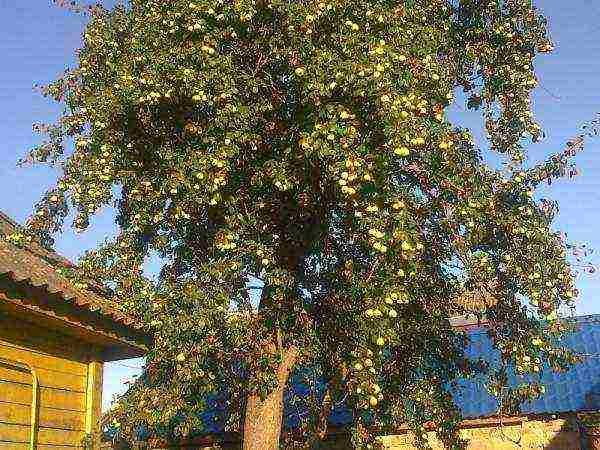
Will a pear bear fruit if it is alone?
This question has already been partially answered above. But let's say a few more words about this.
It is good in this case if pears grow at neighbors on the site. But you can solve this problem yourselfplanting together (at a distance of 3-4 meters) several different varieties of pears.
And if the lack of space does not allow this, then you can plant 1-2 branches of another variety on a variety of one pear.
However, there are pear varieties capable of self-pollination... This phenomenon is quite rare, and therefore very valuable. Therefore, here are some of them.
These include: Banquet, Bere winter Michurina, In memory of Yakovlev, Chizhovskaya, Yubileynaya Korneeva.
How to make it bear fruit, what to do
Above, in the section on the analysis of the reasons for the infertility of pears, this issue has already been largely covered. Now it remains to add that the constant fruiting of pears will contribute the following recommendations:
- To access the root system for more oxygen, you should periodically loosen the soil under the tree. The pear loves it and will respond with an increase in fertility.
- In a dry summer, additional watering of the pear will not hurt, although it is a drought-resistant plant.
- It is also necessary to fertilize with manure, compost and mineral fertilizers. It is convenient to combine this with loosening digging. For a tree, five kilograms of manure is enough once every 2 years, and 50 grams of superphosphate.
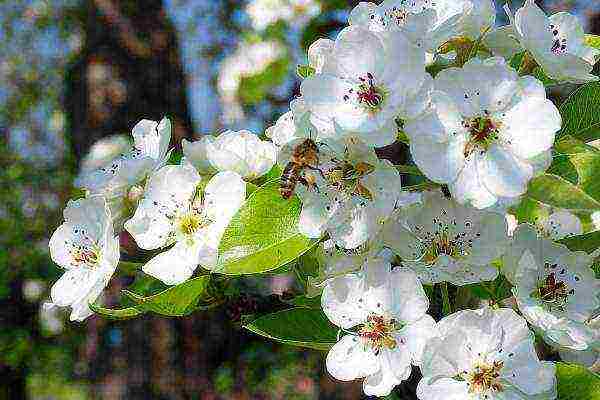
Pear is a valuable and beloved fruit tree, bearing aromatic and amazingly delicate taste fruits.
Jams, jams, compotes, jam and just dried pears allow you to remember the past summer and appreciate this unpretentious tree.
You just have to take a little extra care of it, and it will gratefully respond to your care with a bountiful harvest.

